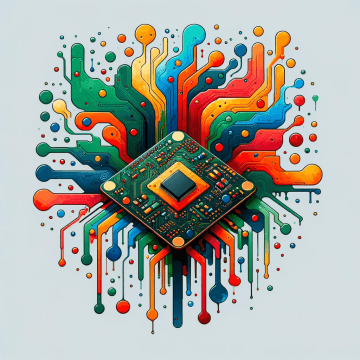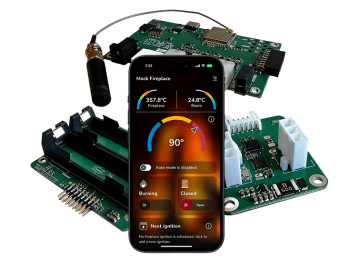About us > ASN News
AI in design tools
In recent years, artificial intelligence (AI) has become a key element in many industries, from healthcare to finance and manufacturing. However, one of the most transformative applications of AI can be found in design tools for semiconductors, printed circuit boards (PCBs), integrated circuits (ICs) and embedded systems. This article takes an in-depth look at how AI is reshaping the landscape of design tools, and shows how it has become an invaluable tool for engineers and designers.

AI and its growing role in design tools
AI means not only automating repetitive tasks, but also enabling faster and more efficient design through advanced analysis and simulation. Design tools that leverage AI can identify potential problems in the design phase, predict performance, and optimize designs for better results. This significantly reduces the time it takes to complete projects and improves the quality of the results.
AI in PCB development
PCB design is a complex process that requires precise coordination between electrical components and their physical arrangement on the board. AI tools can help automate the process of component placement and conductive path tracing, meaning designers can quickly experiment with different configurations to find the most efficient layout. In addition, AI algorithms can predict electromagnetic interference and thermal issues, allowing designers to take precautions before prototyping.
AI in integrated circuit design
In IC design, AI enables an unprecedented level of analysis and optimization. AI algorithms can simulate billions of potential configurations of transistors and other components to find the optimal design for performance, power consumption and area. This capability is particularly valuable in the era of advanced manufacturing technologies, where traditional design methods can no longer effectively address complexity and performance requirements. AI also plays a key role in reducing the time required for design verification, which is often one of the biggest hurdles in the IC development process.

AI and embedded systems
Developing embedded systems requires the integration of hardware and software, which can be a challenge in terms of optimising performance and efficiency. AI tools bring the ability to automate testing and debugging of code, simulate different operating conditions, and optimize device performance. This leads to faster development and better integration between hardware and software, which is essential for the development of IoT devices, wearable electronics and other advanced technologies.
Case studies and successful examples
Many leading companies in the electronic design world have already incorporated AI into their design processes. Siemens, for example, offers Questa Verification IQ, which uses AI for more efficient IC verification. Synopsys and Cadence, two of the leading electronics design companies, have also introduced AI-driven tools that are transforming the way engineers approach IC and PCB design and optimization.
Another example is the use of AI in Flux's Copilot tool, an AI assistant integrated into PCB design tools that helps designers navigate the design process more efficiently and identify potential issues earlier in the process.
Challenges and future direction
While there are many benefits to integrating AI into design tools, there are also challenges. Issues around privacy and data security, as well as the need for extensive training of AI models, are among the main concerns. In addition, while AI can significantly increase efficiency and design quality, the human factor remains essential for creative and innovative solutions.
Given the rapid developments in AI and the continued need for innovation in hardware and software development, it is clear that AI will play an even greater role in design tools in the future. As AI technologies continue to improve and understanding of their potential grows, we can expect further advances in design automation, optimization and verification, leading to faster development, higher quality and more innovative products in electronics and embedded systems.
Become one of our trusted clients




Take your product to the next level!
Book a consultation with our specialists and discover just how many technological possibilities are within your reach. We’ll be in touch soon to explore the best way to work together.
